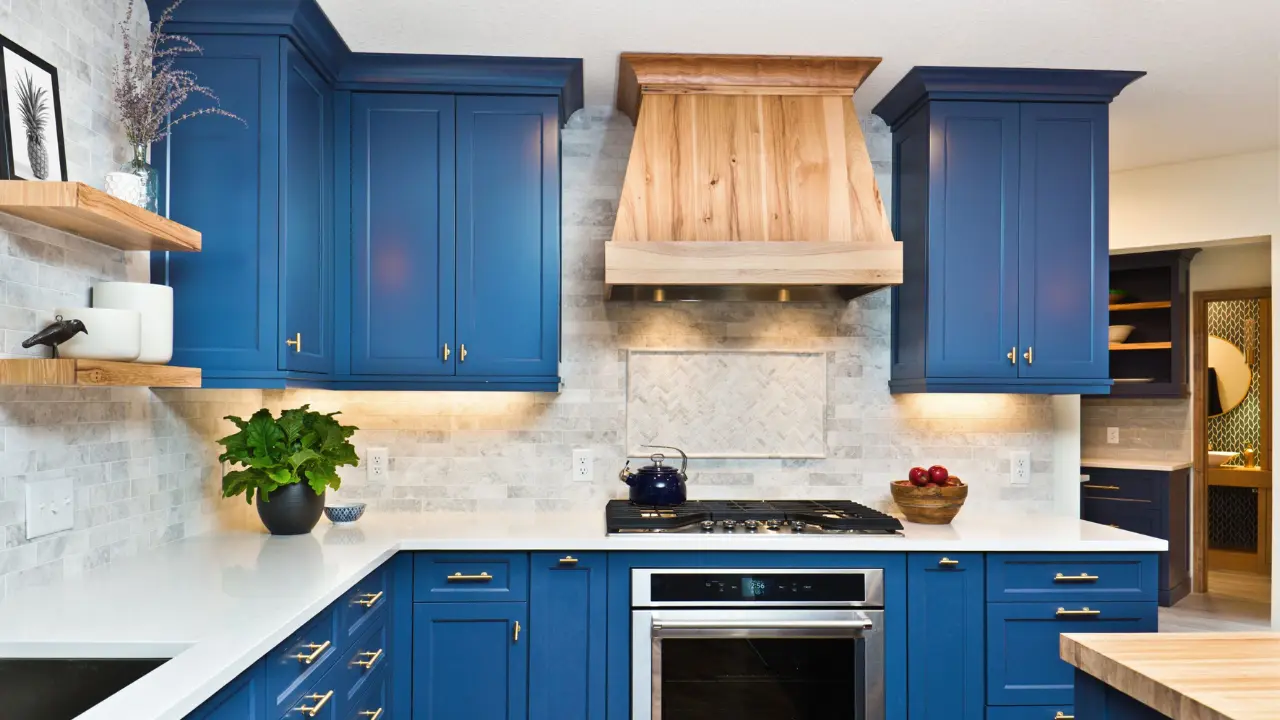Kitchen cabinets are an important part of any kitchen because they provide storage while also improving the overall aesthetics of the space. These cabinets, however, can accumulate grease and grime over time, which not only dulls their appearance but also poses health risks. Regular maintenance, including degreasing, is essential for keeping your kitchen cabinets clean and in good condition. In this article, we will walk you through the process of How to Degrease Kitchen Cabinets, providing helpful tips and insights along the way.
When it comes to keeping your kitchen clean, degreasing kitchen cabinets should be at the top of your priority list. Cooking fumes, splatters, and oily residues can cause grease to accumulate on cabinet surfaces. This accumulation not only detracts from the appearance of your cabinets, but it can also make them sticky and unsanitary. You can restore the shine and extend the life of your cabinets by degreasing them on a regular basis.
Why degreasing is important for kitchen cabinets
Cleaning your kitchen cabinets is necessary for a variety of reasons. To begin with, grease attracts dust and other particles, making your cabinets appear dirty and unkempt. Second, it can become a breeding ground for bacteria and pests, jeopardizing your kitchen’s cleanliness and safety. Finally, removing grease helps protect your cabinets’ finish, preventing long-term damage and preserving their beauty.
Degreasing equipment and materials
Gather the following tools and materials before you begin degreasing your kitchen cabinets:
- Water that is warm
- Dish detergent or a mild detergent
- Soft sponges or microfiber cloths
- Brush with a soft bristle or a toothbrush
- Degreasing agent or white vinegar
- Spray bottle is empty
- Gloves for protection
- discarded newspapers or plastic sheets
Step-by-step guide to degrease kitchen cabinets
Removing cabinet hardware
Begin by removing any cabinet hardware, such as handles, knobs, or hinges. This will make the degreasing process easier and allow you to effectively clean every nook and cranny of your cabinets. Place the hardware in a container or zip-lock bag for safekeeping.
Preparing a degreasing solution
Fill a spray bottle halfway with warm water and a few drops of dish soap or mild detergent. You can also make a natural degreasing solution by combining equal parts white vinegar and warm water. To ensure proper mixing, gently shake the bottle.
Applying the solution to the cabinets
Spray the degreasing solution liberally onto the cabinet surfaces, paying special attention to areas with visible grease stains. Allow a few minutes for the solution to sit to loosen the grease.
Scrubbing and wiping the cabinets
Scrub the cabinet surfaces in circular motions with a soft-bristle brush or toothbrush to remove the grease. Pay special attention to corners, crevices, and handles, as these are common places for grease to accumulate. To remove the loosened grease, wipe the cabinets with a damp microfiber cloth or sponge after scrubbing.
Thoroughly clean and dry the cabinets
After you have scrubbed and wiped all of the cabinets, thoroughly rinse them with clean water to remove any remaining soap or vinegar. Dry the cabinets with a clean, dry microfiber cloth, making sure no moisture remains on the surfaces.
Guidelines for keeping grease-free cabinets
Consider the following suggestions to keep your cabinets grease-free:
- Wipe down cabinet surfaces with a damp cloth on a regular basis to remove any spills or splatters as soon as possible.
- To avoid damaging the cabinet finish, avoid using harsh chemical cleaners. Use gentle detergents or natural cleaning agents instead.
- Inside cabinets, use a protective mat or liner to catch any drips or spills.
- Clean the inside of cabinets on a regular basis to prevent grease buildup.
Frequently Asked Questions
Q: How frequently should I clean my kitchen cabinets?
A: Depending on the level of grease accumulation, it is recommended that you degrease your kitchen cabinets at least once every few months.
Q: Can I degrease my cabinets with baking soda?
A: Baking soda is a good natural degreaser. Make a paste of baking soda and water and apply it to grease stains. Scrub gently and wipe clean.
Q: Do gloves have to be worn when degreasing cabinets?
A: When working with degreasing agents, it is best to wear gloves to protect your skin from irritation.
Conclusion
Kitchen cabinet degreasing is a necessary task for maintaining their cleanliness, appearance, and hygiene. You can effectively remove grease and grime from your cabinets by following the step-by-step guide outlined in this article, restoring their shine and extending their lifespan. To keep your kitchen cabinets grease-free and looking their best, take the necessary precautions, use appropriate cleaning agents, and follow regular cleaning routines.
